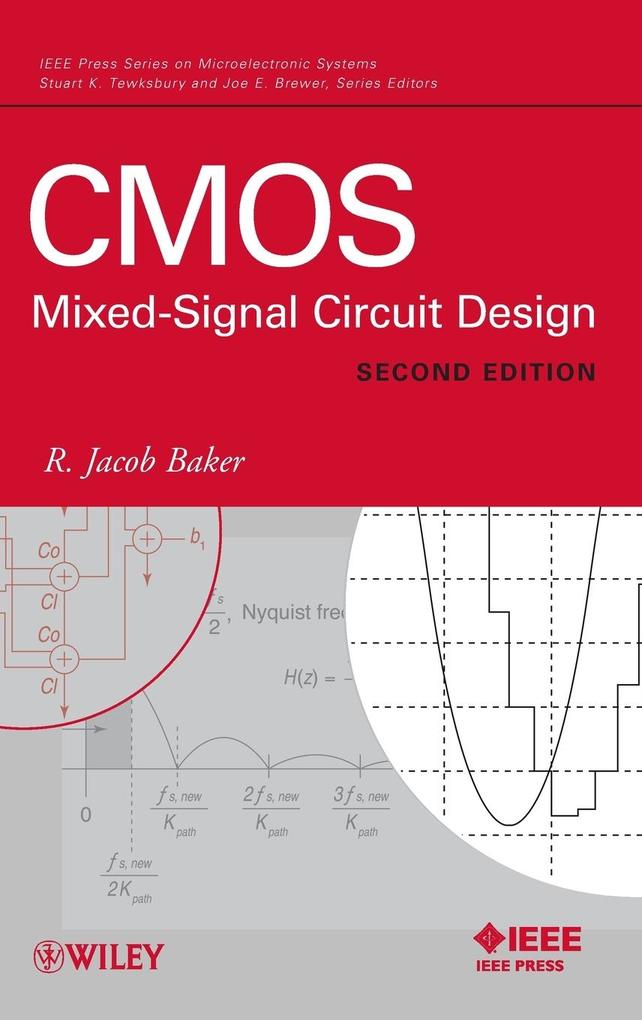An advanced guide to mixed signal circuit design that will bring designers rapidly up to speed. This new edition features additional examples and more, smaller chapters to make the information more accessible. The book is supported by an author maintained web site that provides solutions to the homework problems, net lists, and simulations. .
Get up to speed on mixed-signal circuit design
Mixed-signal design (MSD) is currently performed in industry by a select few "gurus." While MSD techniques can be found scattered throughout hard-to-digest technical papers, it is difficult for someone new to the topic to get up to speed on the subject without the guidance of a mentor and the right environment in which to gain the relevant experience.
CMOS Mixed-Signal Circuit Design, Second Edition fills the gap in the technical literature by providing a tutorial presentation of MSD techniques and integrating homework problems, netlists, and simulation examples, all of which are available for download via the book's Web site at CMOSedu. com. Additional features of the Second Edition include:
* Coverage of noise-shaping data converters (delta-sigma topologies)
* Practical discussion of digital filtering and its uses in transistor-level circuit designs
* Design of analog filters for both reconstruction and anti-aliasing
* Transistor- and system-level design techniques and theory
* Presentation of a topology for high-speed data conversion in nanometer CMOS
Complemented with practical examples and discussions, CMOS Mixed-Signal Circuit Design, Second Edition is an ideal textbook for graduate students in mixed-signal circuit design courses. It is also an equally valuable reference for professionals who want to improve their skills in this area.
Inhaltsverzeichnis
Preface. Chapter 1. Signals, Filters, and Tools.
1. 1. Sinusoidal Signals.
1. 2. Comb Filters.
1. 3. Representing Signals.
Chapter 2. Sampling and Aliasing.
2. 1. Sampling.
2. 2. Circuits.
Chapter 3. Analog Filters.
3. 1. Integrator Building Blocks.
3. 2. Filtering Topologies.
Chapter 4. Digital Filters.
4. 1. SPICE Models for DACs and ADCs.
4. 2. Sinc-Shaped Digital Filters.
4. 3. Filtering Topologies.
Chapter 5. Data Converter SNR.
5. 1. Quantization Noise.
5. 2. Signal-to-Noise Ratio (SNR).
5. 3. Improving SNR using Averaging.
5. 4. Using Feedback to Improve SNR.
Chapter 6. Data Converter Design Basics.
6. 1. Passive Noise-Shaping.
6. 2. Improving SNR and Linearity.
Chapter 7. Noise-Shaping Data Converters.
7. 1. First-Order Noise Shaping.
7. 2. Second-Order Noise-Shaping.
7. 3. Noise-Shaping Topologies.
Chapter 8. Bandpass Data Converters.
8. 1. Continuous-Time Bandpass Noise-Shaping.
8. 2. Switched-Capacitor Bandpass Noise-Shaping.
Chapter 9. A High-Speed Data Converter.
9. 1. The Topology.
9. 2. Practical Implementation.
9. 3. Conclusion.
Index.
